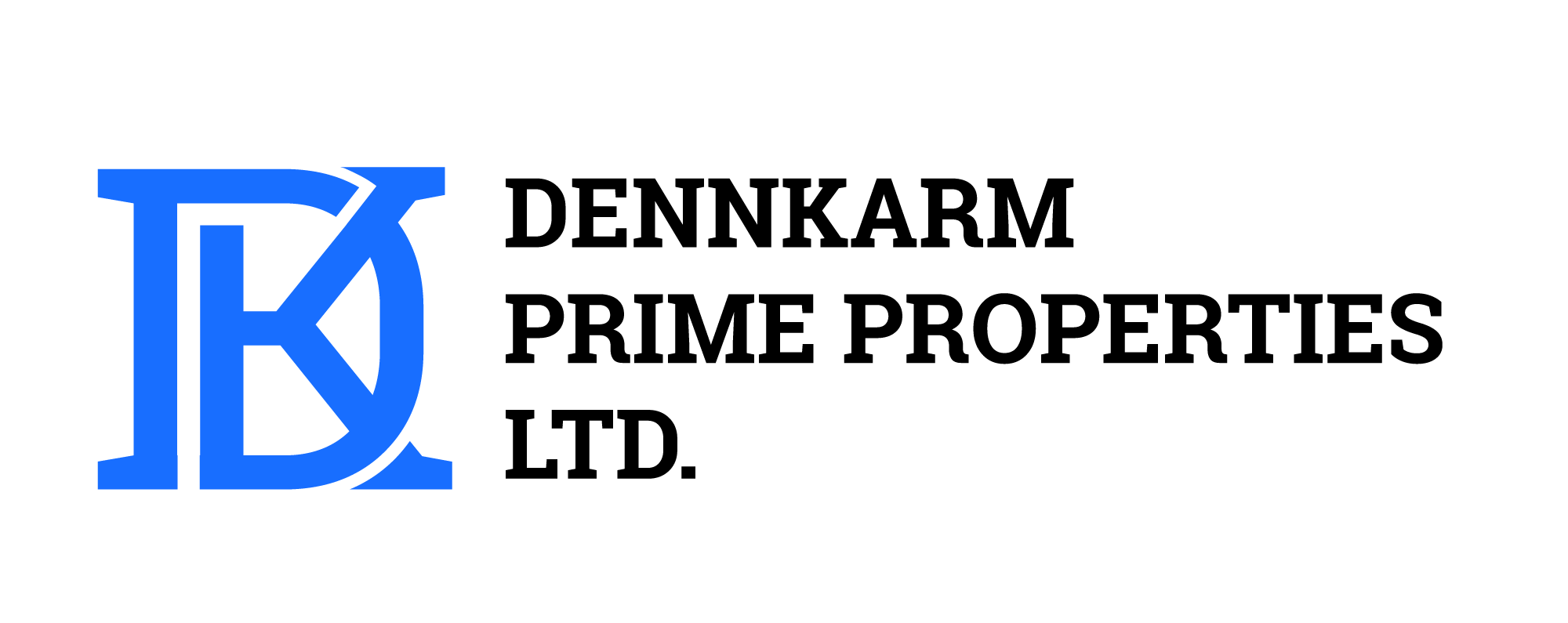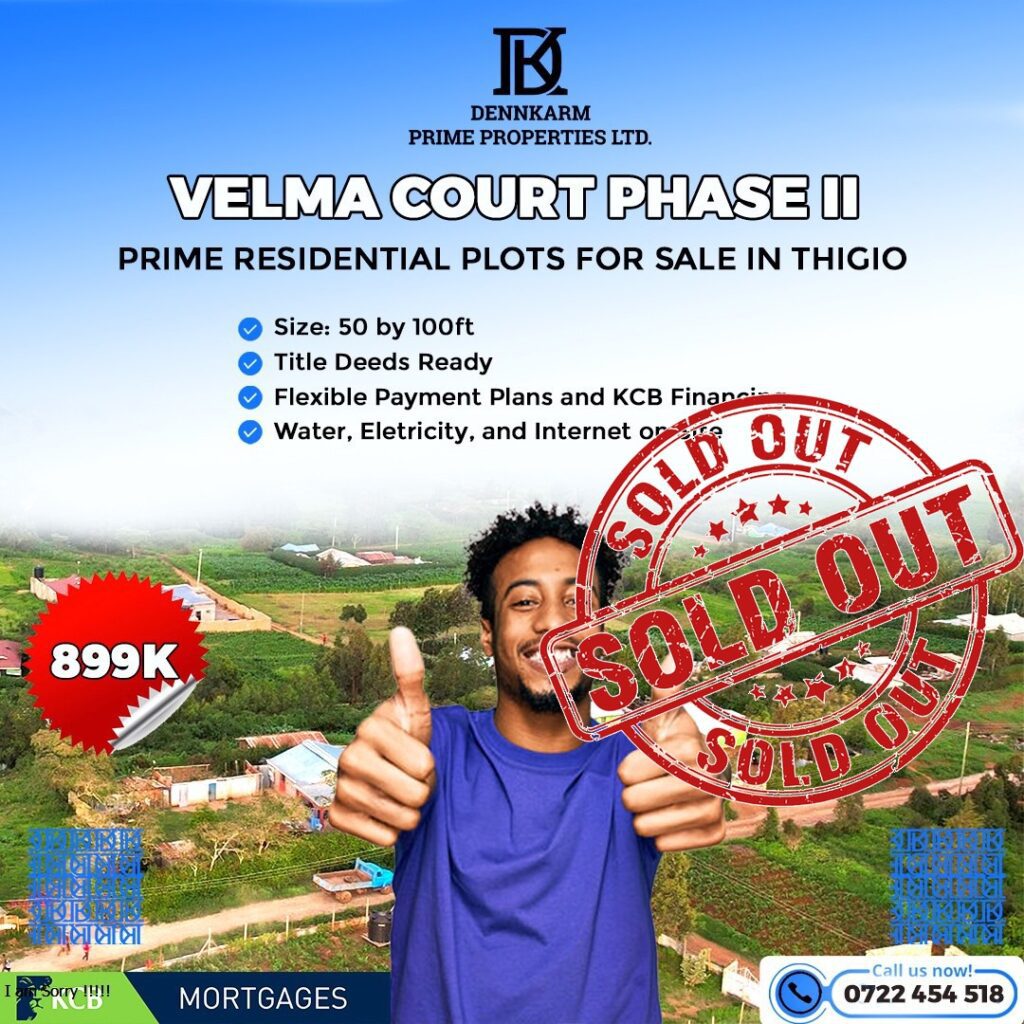The landscape of Kenya Real Estate is rapidly transforming. Where vast agricultural farms once dominated, the sprawl of urbanisation and a burgeoning middle class now demand smaller, more accessible, and serviced plots for residential and commercial development. This shift has given rise to a highly lucrative investment strategy: land subdivision and value addition. Far from simply buying and selling, this approach involves strategically transforming large parcels of land, often agricultural, into highly desirable and profitable individual plots. For visionary real estate firms like Dennkarm Prime Properties, specializing in prime, value-added land in growth areas such as Thigio in Kikuyu, this is not just a trend – it’s a cornerstone of wealth creation.
This comprehensive guide will delve into the intricacies of land subdivision, the power of strategic value addition, and how to maximize your returns in Kenya’s dynamic property market.
Table of Contents
- Introduction: From Farm to Future – The Strategic Shift in Kenya Real Estate
- The Power of Subdivision: Why Break Down Large Parcels?
- The Step-by-Step Legal & Procedural Journey of Land Subdivision in Kenya
- Initial Preparations & Professional Engagement
- County Approvals & Planning Compliance
- Survey & Mutation: Formalizing the New Parcels
- Obtaining New Title Deeds
- Beyond Subdivision: Strategic Value Addition for Maximized Returns
- Essential Infrastructure: Roads, Water & Electricity
- Clear Demarcation & Security
- Zoning & Change of User
- Navigating the Landscape: Challenges & Costs of Subdivision and Value Addition
- Dennkarm Prime Properties: Your Trusted Partner in Value-Added Land
- Thigio, Kikuyu: A Case Study in Profitable Land Transformation
- Conclusion: Farm to Future – A Strategic Path to Wealth
- More Information: Resources for Deeper Understanding
- Call to Action
- Social Media Excerpt
1. Introduction: From Farm to Future – The Strategic Shift in Kenya Real Estate
For generations, large tracts of land in Kenya served primarily as agricultural assets. However, the relentless march of urbanisation, driven by population growth and economic development, has brought these peri-urban and rural areas into the orbit of metropolitan centers. This expansion has fundamentally altered land use patterns, creating unprecedented demand for smaller, more manageable plots suitable for housing and businesses. The savvy investor in Kenya Real Estate has recognised this shift, transforming what was once a single, often less liquid, agricultural asset into multiple highly desirable, value-added parcels. This strategic transformation, perfected by industry leaders like Dennkarm Prime Properties, especially in fast-growing locations such as Thigio in Kikuyu, is proving to be a goldmine for maximizing investment returns.
2. The Power of Subdivision: Why Break Down Large Parcels?
Subdivision involves legally dividing a large parcel of land, under one title deed, into several smaller, individual plots, each with its own separate title. The rationale behind this powerful strategy is compelling:
- Increased Marketability: A large tract of land appeals to a very narrow segment of buyers. Subdividing it into smaller, more affordable units (e.g., 50×100 ft or 100×100 ft plots) broadens the market appeal significantly, making it accessible to a larger pool of middle-class Kenyans and smaller investors.
- Higher Cumulative Returns: The sum of the sales prices of individual subdivided plots nearly always far exceeds the price of selling the original large parcel as a single unit. This is the core principle of wealth creation through subdivision.
- Reduced Individual Cost: Smaller plots are more budget-friendly for individual buyers, facilitating faster sales and quicker liquidity.
- Tailored to Demand: Subdivision allows developers to create plot sizes and configurations that precisely match current market demand in specific growing towns.
3. The Step-by-Step Legal & Procedural Journey of Land Subdivision in Kenya
Subdividing land in Kenya is a multi-stage legal and regulatory process that requires precision and adherence to strict guidelines.
1. Initial Preparations & Professional Engagement
This foundational stage sets the groundwork for the entire process.
In Detail:
- Title Deed Search: Conduct a thorough official search at the Ministry of Lands (or via Ardhisasa) to confirm ownership, land size, tenure, and crucially, any existing encumbrances (e.g., caveats, charges) or restrictions that could hinder subdivision.
- Market Evaluation: If the purpose is resale, assess market demand, prevailing prices for various plot sizes, and competition in the target area.
- Engage Professionals:
- Registered Physical Planner: Essential for preparing a detailed subdivision scheme plan (layout of plots, access roads, waste/water disposal plans) and a signed planning brief, along with the PPA 1 Form. They ensure compliance with planning regulations.
- Registered Land Surveyor: Crucial for identifying existing boundaries, taking precise field measurements, drafting the detailed subdivision map, and later, for beaconing the new plots and preparing the Mutation Form.
2. County Approvals & Planning Compliance
The proposed subdivision must align with local physical planning regulations.
In Detail:
- PPA 1 Submission: Fill the PPA 1 Form in triplicate and submit it, along with the subdivision scheme plan (signed by the physical planner), original title deed, location map, and payment receipts for application fees and land rates, to the County Physical Planning Department.
- County Review: The County Government circulates the scheme to various departments (e.g., roads, environment, water, public health) for evaluation of zoning compliance, road alignments, provision for utilities, social amenities, and environmental considerations. They may require land for public utilities (e.g., roads, playgrounds).
- PP2 Form Issuance: Upon satisfactory review and any necessary amendments, the County Government issues a PP2 Form, formally approving the subdivision scheme.
3. Survey & Mutation: Formalizing the New Parcels
This stage involves the physical demarcation and legal recognition of the new plots.
In Detail:
- Beaconing: The land surveyor physically demarcates the new individual plots on the ground by placing beacons according to the approved subdivision scheme plan. The landowner should ideally be present.
- Mutation Form: The surveyor prepares the Mutation Form in triplicate, detailing the original title, the new plot sizes, and the new layout. This form is signed by the landowner(s) and the surveyor.
- District/Government Surveyor Approval: The Mutation Form is submitted to the District (now County) Surveyor, who verifies the survey work, approves the subdivision, and allocates new, unique Land Reference (LR) numbers to each new plot. A copy is sent to the Land Registrar and Survey of Kenya for updating the Registry Index Map (RIM).
4. Obtaining New Title Deeds
The final and most crucial step, providing individual legal ownership.
In Detail:
- Application: Once the Mutation Form is approved and new LR numbers are allocated, an application is made to the Ministry of Lands for the issuance of individual title deeds for each new plot.
- Issuance: The Land Registrar opens a new green card for each new title and issues the individual title deeds. This process often takes 4-6 weeks if all approvals are in place and no disputes arise.
4. Beyond Subdivision: Strategic Value Addition for Maximized Returns
Simply subdividing land isn’t enough; strategic value addition unlocks premium prices and faster sales.
1. Essential Infrastructure: Roads, Water & Electricity
These are non-negotiable for modern living and significantly boost property desirability.
In Detail:
- Road Networks: Investing in well-graded, murram, or even tarmacked internal access roads within the subdivided estate creates easy accessibility to each plot. Clearly defined and well-maintained roads significantly increase plot value and market appeal.
- Water & Electricity: Ensuring reliable access to water (e.g., borehole, piped water connection points) and electricity (power poles ready for connection) on-site is a major value driver. Plots without these essentials face severe value constraints.
2. Clear Demarcation & Security
A defined, secure environment instills confidence in buyers.
In Detail:
- Clear Beacons & Fencing: Beyond just internal beacons, clear perimeter demarcation or fencing around the entire subdivided estate enhances perceived security and clearly defines the community’s boundaries. This also contributes to the “controlled development” aspect.
- Gate & Guard House: For higher-value subdivisions, adding a main gate and a small guard house signals a controlled, secure environment, which is a major draw for buyers.
3. Zoning & Change of User
Aligning land use with market demand can dramatically increase value.
In Detail:
- Strategic Repurposing: If the original land was agricultural, a successful “Change of User” application from agricultural to residential (or commercial) can exponentially increase the land’s market worth. This is a purely administrative, yet highly effective, value add.
- Compliance: Ensuring the subdivision adheres to county zoning regulations (e.g., minimum plot sizes, building heights) guarantees that buyers can develop their plots legally and without future issues.
5. Navigating the Landscape: Challenges & Costs of Subdivision and Value Addition
While profitable, the process comes with challenges and costs:
- Financial Outlay: The collective costs for surveyors, physical planners, county approvals, LCB consent, new title deeds, legal fees, and especially infrastructure (roads, water, electricity) can be substantial, easily ranging from Ksh 100,000 to over Ksh 500,000 for approvals alone, with infrastructure adding millions.
- Time & Bureaucracy: The process involves multiple government bodies and can be lengthy, with administrative delays, public participation requirements, and varying response times. Patience is key.
- Regulatory Compliance: Strict adherence to zoning laws, minimum plot sizes, road widths, and environmental regulations is crucial. Non-compliance can lead to rejections, fines, or even demolition.
- Market Risk: While demand is generally high in growth areas, market fluctuations or oversupply in a specific micro-location can affect sales speed and prices.
- Disputes: Lingering land disputes, boundary issues, or family inheritance claims can significantly delay or halt the entire process. Thorough due diligence on the original parcel is critical.
6. Dennkarm Prime Properties: Your Trusted Partner in Value-Added Land
Dennkarm Prime Properties stands at the forefront of providing secure, value-added land investment opportunities in Kenya Real Estate. They understand that true value for clients comes from transforming raw land into development-ready plots.
- Expert Sourcing: Dennkarm meticulously sources large land parcels in strategic, fast-growing areas, with a keen eye on their subdivision and value addition potential.
- Professional Execution: They undertake or oversee the entire complex process of subdivision, working with licensed surveyors and physical planners to ensure all legal and procedural requirements are met.
- Infrastructure-Ready: Dennkarm’s properties often come with essential value additions already in place – clearly demarcated plots, well-graded access roads, and readily available water and electricity connections, significantly simplifying the development journey for buyers.
- Clear Title Deeds: A cornerstone of their commitment, Dennkarm ensures that every subdivided plot comes with its own individual, verified, and ready-to-transfer title deed, providing absolute peace of mind.
- Investment Security: By pre-vetting, subdividing, and adding value, Dennkarm offers plots that are not only ready for immediate development but also poised for rapid appreciation.
7. Thigio, Kikuyu: A Case Study in Profitable Land Transformation
Thigio in Kikuyu is a prime example of a growing Kenyan town where land subdivision and value addition strategies are yielding significant returns for investors and developers, including Dennkarm Prime Properties.
- Strategic Location: Thigio’s proximity to the Southern Bypass and other key infrastructure makes it highly accessible from Nairobi, driving demand for residential plots.
- Agricultural Land Conversion: Historically agricultural, large land parcels in Thigio are being strategically converted into residential plots. This transformation, coupled with value addition, has seen land values appreciate significantly.
- Dennkarm’s Fahari Gardens: This project in Thigio perfectly illustrates the “farm to future” concept. Dennkarm has taken a large tract of land and subdivided it into prime 50×100 plots, adding crucial value through:
- On-site Water & Electricity: Ready connections simplify the building process for buyers.
- Well-defined Access Roads: Ensuring easy navigation within the estate.
- Clear Demarcation: Providing distinct, surveyed plots.
- Secure Environment: Contributing to the overall appeal of a controlled development.
- High Demand: The affordability of plots in Thigio, combined with the added value and strategic location, creates immense demand from both homeowners and investors, leading to quick absorption of subdivided units and strong capital gains.
8. Conclusion: Farm to Future – A Strategic Path to Wealth
The strategic path from raw “farm” land to valuable “future” development-ready plots through subdivision and value addition is a proven, high-return strategy in Kenya Real Estate. It taps into the surging demand for accessible, serviced land in growing peri-urban towns. While the process requires a significant understanding of legal procedures, an upfront investment in infrastructure, and a degree of patience, the potential for maximizing returns is immense. By partnering with experienced and reputable land investment companies like Dennkarm Prime Properties, especially in dynamic areas such as Thigio in Kikuyu, investors can confidently navigate this lucrative landscape and transform agricultural potential into tangible wealth.
9. More Information: Resources for Deeper Understanding
To further your understanding of land subdivision, value addition, and relevant regulations in Kenya Real Estate, consider these reputable resources:
- Ministry of Lands, Public Works, Housing & Urban Development (Ardhisasa Platform): For official land searches, title deed services, and mutation processes.
- Survey of Kenya: For information on surveying regulations, cadastral maps, and mutation forms.
- Search online for “Survey of Kenya” for official contacts and guides.
- Physical Planners Registration Board (PPRB) & Kenya Institute of Planners (KIP): For lists of registered physical planners and planning regulations.
- Search online for “Physical Planners Registration Board Kenya” and “Kenya Institute of Planners.”
- Institute of Surveyors of Kenya (ISK): For lists of registered land surveyors and surveying standards.
- Relevant County Government Websites (e.g., Kiambu County): For specific physical planning and zoning regulations pertinent to land subdivision in your target area.
- Search online for “Kiambu County Government Physical Planning” for specific guidelines.
10. Call to Action
Ready to transform potential into profit through strategic land subdivision and value addition? Dennkarm Prime Properties specializes in sourcing, subdividing, and adding value to prime land, offering you secure and ready-to-develop plots with clear title deeds in high-growth areas like Thigio in Kikuyu.
Unlock the potential of your investment. Contact us today to explore our value-added land opportunities!
Dennkarm Prime Properties Contact Details:
- Phone/WhatsApp: +254-722-45-45-18 or +254-101-45-45-00
- Email: info@dennkarmproperties.com / sales@dennkarmproperties.com
- Office Address: 3rd Floor (Room 301), Muchane Plaza, Kikuyu
- Website: dennkarmproperties.com



